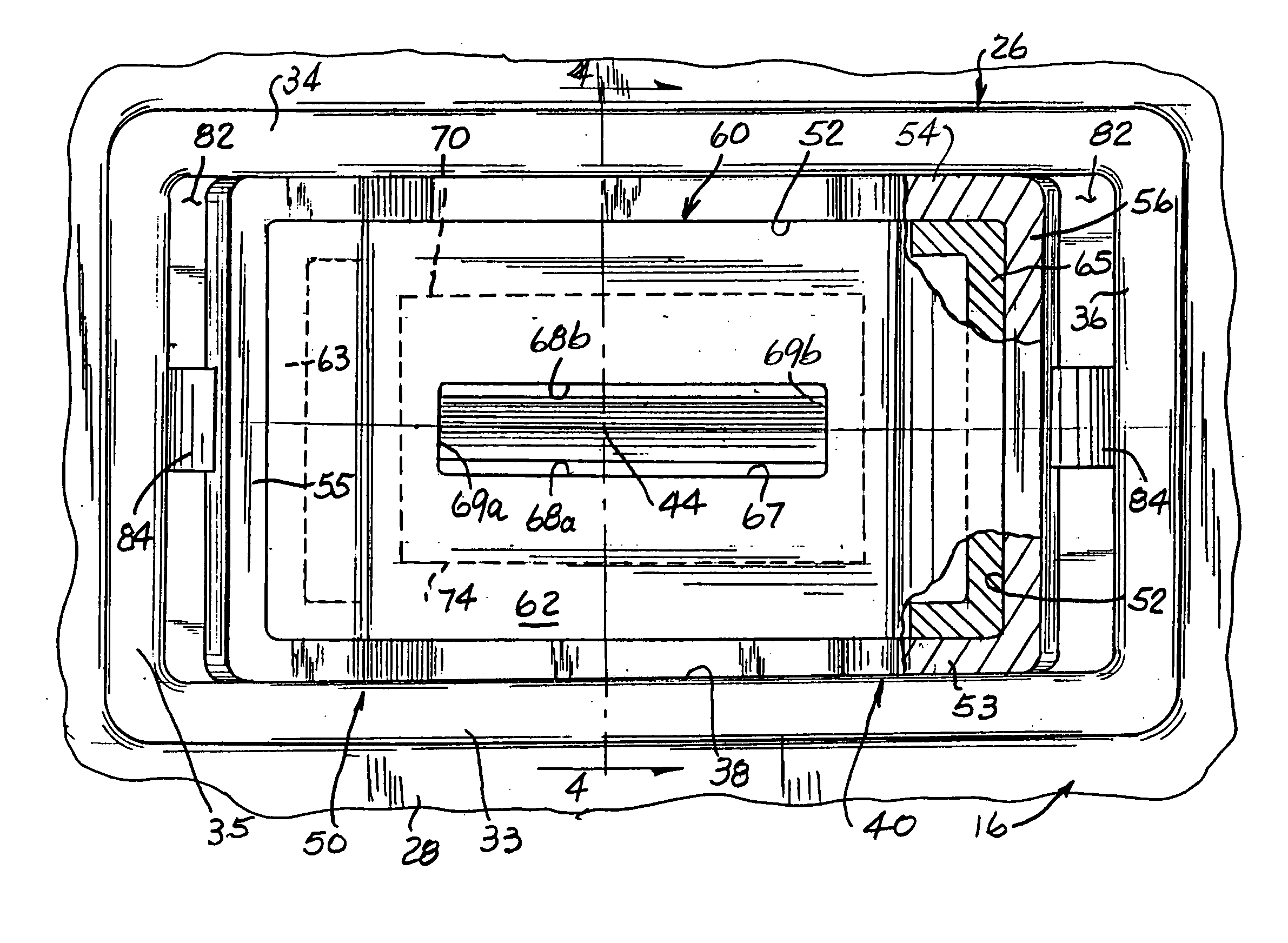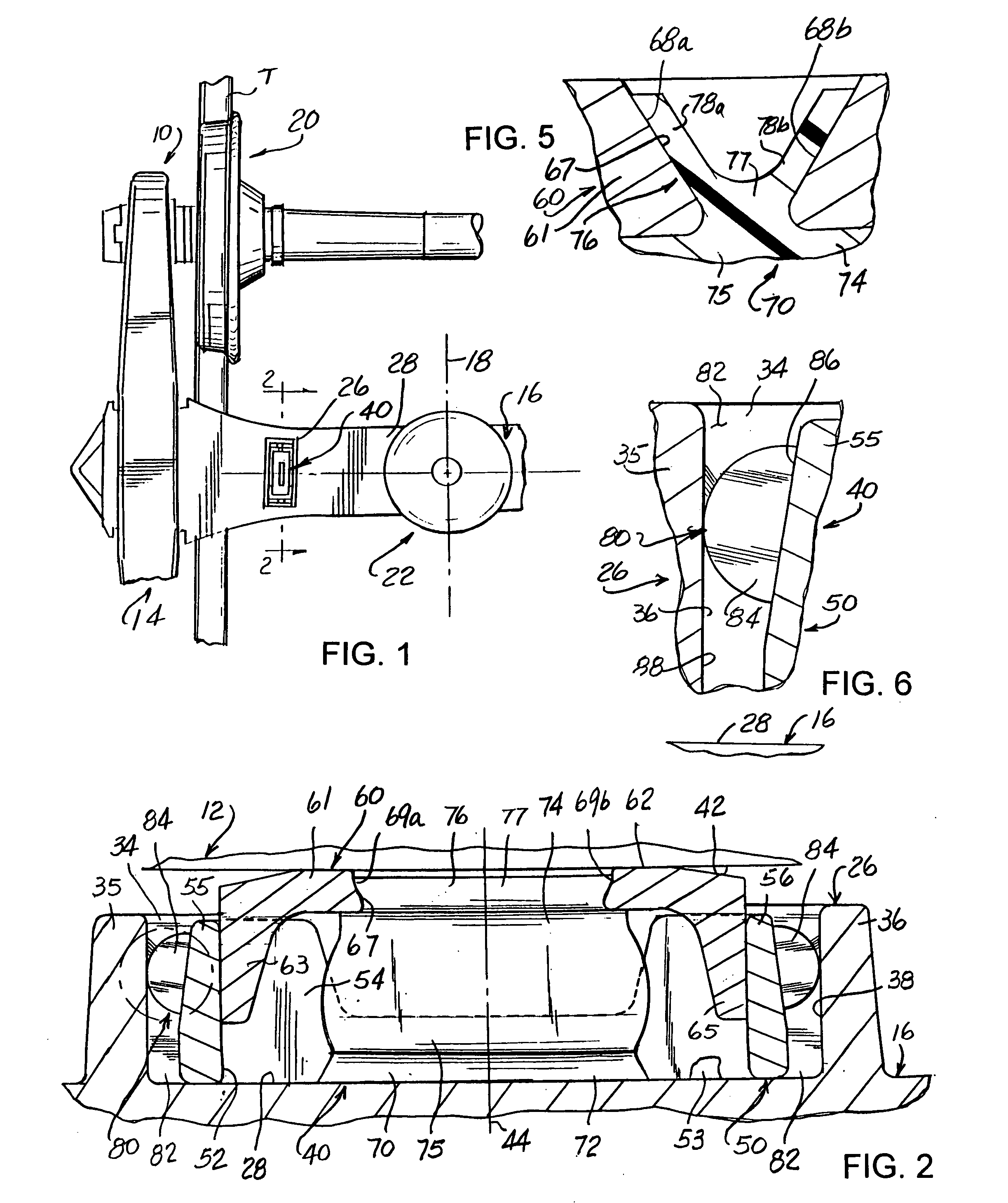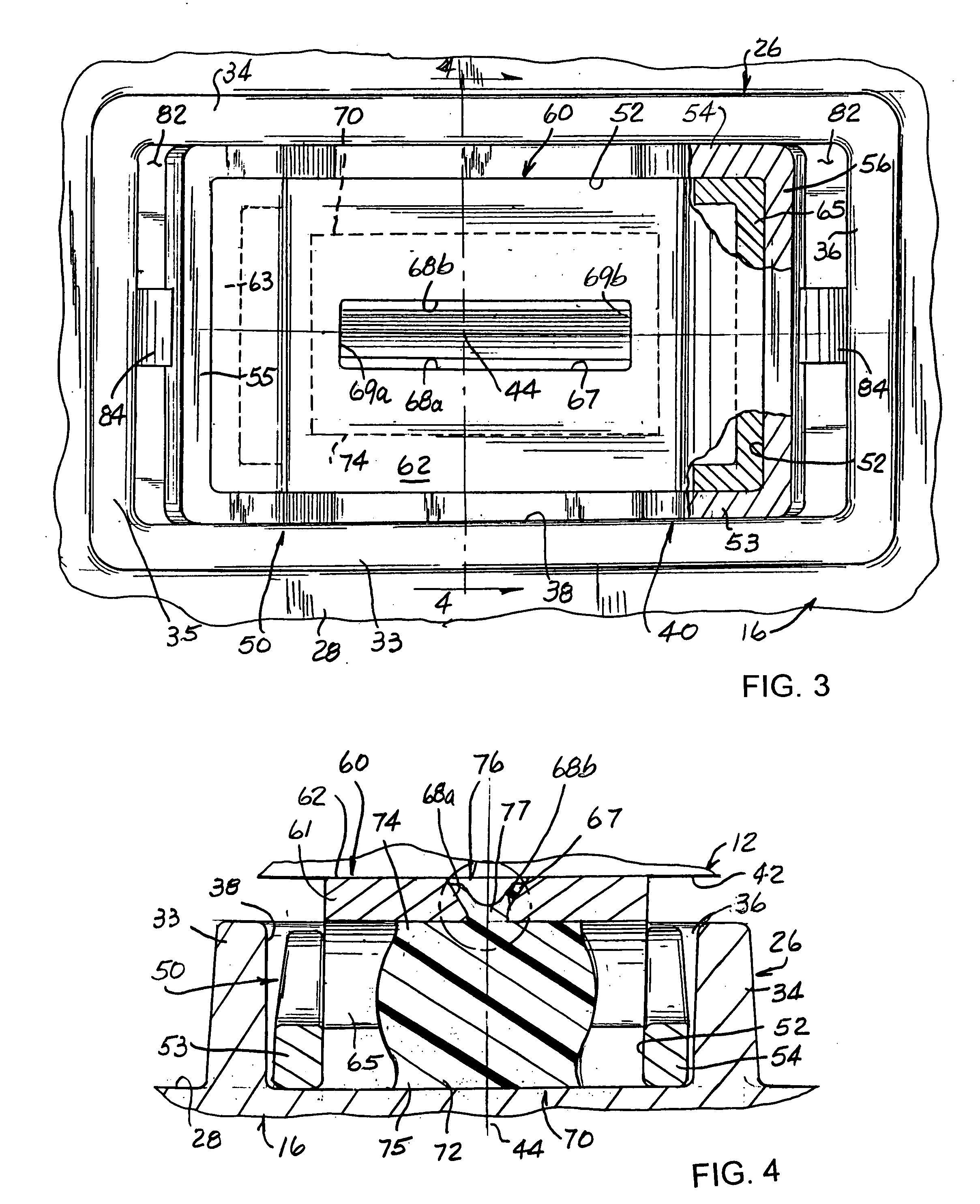Constant contact side bearing assembly for a railcar
a bearing assembly and railcar technology, applied in the direction of bearings, shafts and bearings, rotary bearings, etc., can solve the problems of railcar trucks also prone to oscillate or “hunt”, and the car body tends to adversely roll from side to side,
- Summary
- Abstract
- Description
- Claims
- Application Information
AI Technical Summary
Benefits of technology
Problems solved by technology
Method used
Image
Examples
Embodiment Construction
[0037] While the present invention is susceptible of embodiment in multiple forms, there is shown in the drawings and will be described a preferred embodiment of the invention, with the understanding the present disclosure sets forth an exemplification of the invention which is not intended to limit the invention to the specific embodiment illustrated and described.
[0038] Referring now to the drawings, wherein like reference numerals indicate like parts throughout the several views, there is shown in FIG. 1 a fragment of a railcar wheeled truck assembly, generally indicated by reference numeral 10, which supports and allows a railcar body 12 (FIG. 2) to ride along and over tracks T. Truck assembly 10 is of a conventional design and includes a side frame 14, a bolster 16, extending generally transversely relative to a longitudinal centerline 18 of the railcar body 12, and a wheel set 20. A conventional center bearing plate 22 is suitably mounted on the bolster 16 for pivotally suppo...
PUM
 Login to View More
Login to View More Abstract
Description
Claims
Application Information
 Login to View More
Login to View More - R&D
- Intellectual Property
- Life Sciences
- Materials
- Tech Scout
- Unparalleled Data Quality
- Higher Quality Content
- 60% Fewer Hallucinations
Browse by: Latest US Patents, China's latest patents, Technical Efficacy Thesaurus, Application Domain, Technology Topic, Popular Technical Reports.
© 2025 PatSnap. All rights reserved.Legal|Privacy policy|Modern Slavery Act Transparency Statement|Sitemap|About US| Contact US: help@patsnap.com



